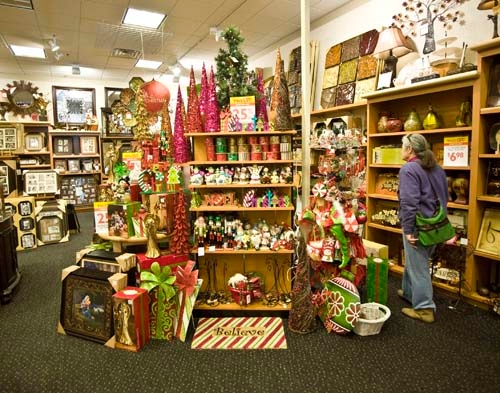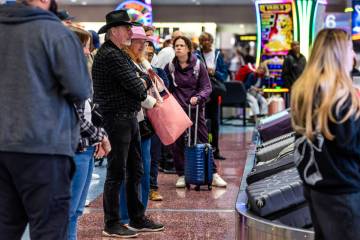Holiday spending ‘record’ not as good as it looks
Holiday spending reached the highest level on record last year, but that news isn't as good as it sounds.
The $462 billion in holiday spending reported by a trade group on Friday handily tops the $453 billion peak reached in 2007, before the economy took a nosedive. Take a closer look, though, and you'll find these figures don't tell the whole story.
Just because Americans spent more this holiday season doesn't mean they bought more. That button-down shirt you bought your father in 2010 probably cost more than it would have three years ago. But the government figures on which the National Retail Federation bases its holiday sum do not take into account rising prices. Although inflation has been tame over the past few years, holiday spending would have had to clear $478 billion to signify spending was back to prerecession levels.
That's not all.
The U.S. population has grown by 8 million people since the previous record was set. That means there were millions more shoppers in stores this Christmas, driving up the sales total. But the average spending per person is still lower than it was a few years ago, suggesting consumers are still slower to pull out their wallets.
"Everyone is talking about great holiday sales, and it's undeniable that the consumer mood has improved," IHS Global Insight senior economist Chris Christopher said. "But even if spending surpassed its previous peak, the population has been growing, so we're still catching up."
The federation defines the holiday season as the two months starting Nov. 1 and ending Dec. 31. November revenue was strong as retailers rolled out discounts early, while December was a little weaker. But stores didn't have to slash prices as Christmas approached the way they did in 2009, and many merchants reported strong growth.
This past season's revenue marked a 5.7 percent increase over holiday 2009. That's the strongest gain since 2004. Although encouraging, that doesn't mean shoppers have recovered from the loss of $11 trillion in household wealth. From consumers' perspective, the economy hasn't improved dramatically from last year, as credit remains tight, unemployment hasn't budged below 9 percent, and home values are still depressed. Consumer confidence is hovering at the same level as a year ago and well below the point that signals a stable economy.
Michelle Lee, an administrative assistant in Queens, N.Y., gave herself a tight budget for Christmas shopping this year and did not go a penny over. After seeing several of her co-workers lose their jobs -- and having unemployed herself in 2002, during another period of economic recovery -- she's still nervous, she said.
"Even though things are supposedly getting better, I'm still being really careful what I buy," she said.
In several categories, spending on gifts fell short of shoppers' 2007 outlay. In 2010, consumers spent $50.7 billion on clothing and accessories like shoes and scarves; in 2007, that figure was $51.3 billion even before adjusting for inflation. Holiday revenue at department stores was $45.3 billion last year, much less than the $50.4 billion that traded hands in 2007.
Online shopping was a bright spot this holiday. Americans spent 13 percent more online than last year, clicking their way to a record $30.81 billion in sales, comScore reported. Computer hardware and books recorded the most growth. Web-based stores racked up $28 billion during holiday 2007.


















